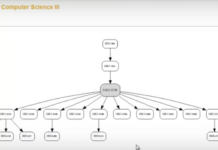For a very quick and preliminary review of possible educational uses or affordances of the Apple iPad, see Elliott Masie’s 10 minute video at: http://www.ipadlearninglab.com/ (Thanks to Clayton R. Wright for bringing this to my attention – from Sierra Leone!)
It would be a good idea to keep an eye on the Masie web site over the next few weeks, as Elliott and his team explore the educational possibilities of the iPad, which is now on sale in the USA, and later this month in Canada.
My immediate thoughts on the iPad after seeing the video:
1. I’m going to wait for the next version, as there seems to be some key features missing, such as a USB port and a video camera option. Connecting an iPad to a VGA projector looks possible but awkward. (However, maybe I am missing some important new thinking here about the way the iPad is meant to be used). Nevertheless, I’m semi-retired, so can’t afford to keep buying every new version of a gadget, and I’m happy for someone else to find the bugs. However, if I was working within an educational institution, I would try to get a model of the iPad as soon as possible to explore its capabilities, then throw it away (or give it to charity) as soon as the next version arrives.
2. If I was an instructional designer, teacher or instructor, I would immediately start thinking of the design implications for the future. In particular, what is the best way to incorporate multimedia and networking into the design of learning for my course or program? The iPad clearly indicates a move away from the dominance of text, even (or perhaps especially) in higher education, although , as with all pre-existing media when a new technology comes along, text will have a reduced but still important role.This seems to me to revive or increase the need for a model of media selection for education, such as my old ACTIONS model – see Technology, e-Learning and Distance Education. I will be revising this with a new version due for 2012.
With the iPad, I suspect it will also further reduce the importance of spoken or ‘read’ text (i.e. lectures – the word comes from the Latin ‘to read’. In medieval times, there was usually only one copy of a beautifully handcrafted text written/copied painstakingly by a monk, and only the professor was allowed to read from it. So, yes, the lecture IS a technology artefact. However, in case you haven’t noticed, universities and colleges, the technology has CHANGED.) How can I easily incorporate media and graphics into my teaching – or even more so, how can I encourage my students to use multimedia to demonstrate their learning – including formal assessment? Do I need to be ‘there’ for students to do this? (I’m going to do a blog soon on why ‘there’ is important in education, how the concept though of ‘there’ is changing, and why for this reason alone education must fundamentally change).
3. Although the iPad suggests an exciting future for the design of teaching and learning, we need to bear in mind that many people still have limited broadband access, which is essential for such developments. So the iPad will at least initially further widen the digital divide (see Canada’s Digital Divide).









 Dr. Tony Bates is the author of eleven books in the field of online learning and distance education. He has provided consulting services specializing in training in the planning and management of online learning and distance education, working with over 40 organizations in 25 countries. Tony is a Research Associate with Contact North | Contact Nord, Ontario’s Distance Education & Training Network.
Dr. Tony Bates is the author of eleven books in the field of online learning and distance education. He has provided consulting services specializing in training in the planning and management of online learning and distance education, working with over 40 organizations in 25 countries. Tony is a Research Associate with Contact North | Contact Nord, Ontario’s Distance Education & Training Network.


The iPad is very easy to hook up to a projector (using a VGA cord, which I need a similar one for my Macbook laptop to work on a VGA cord).
Also, the iPad functions off of 3G wireless, opening up the internet to students who may not have it at home. For a monthly fee (non-contract) they can get access to iTunes University, the ability to make powerpoint (Keynote) presentations ($9.95 for the program), read most of their course text books and much more.
[…] Bates: Educational affordances of the iPad: “Although the iPad suggests an exciting future for the design of teaching and learning, we […]
[…] Tony Bates (specializing in e-learning and distance education) thinks this might herald a real focus on non-text materials, and that we should start thinking about that as materials are designed.https://tonybates.wpengine.com/2010/04/04/educational-affordances-of-the-ipad/ […]